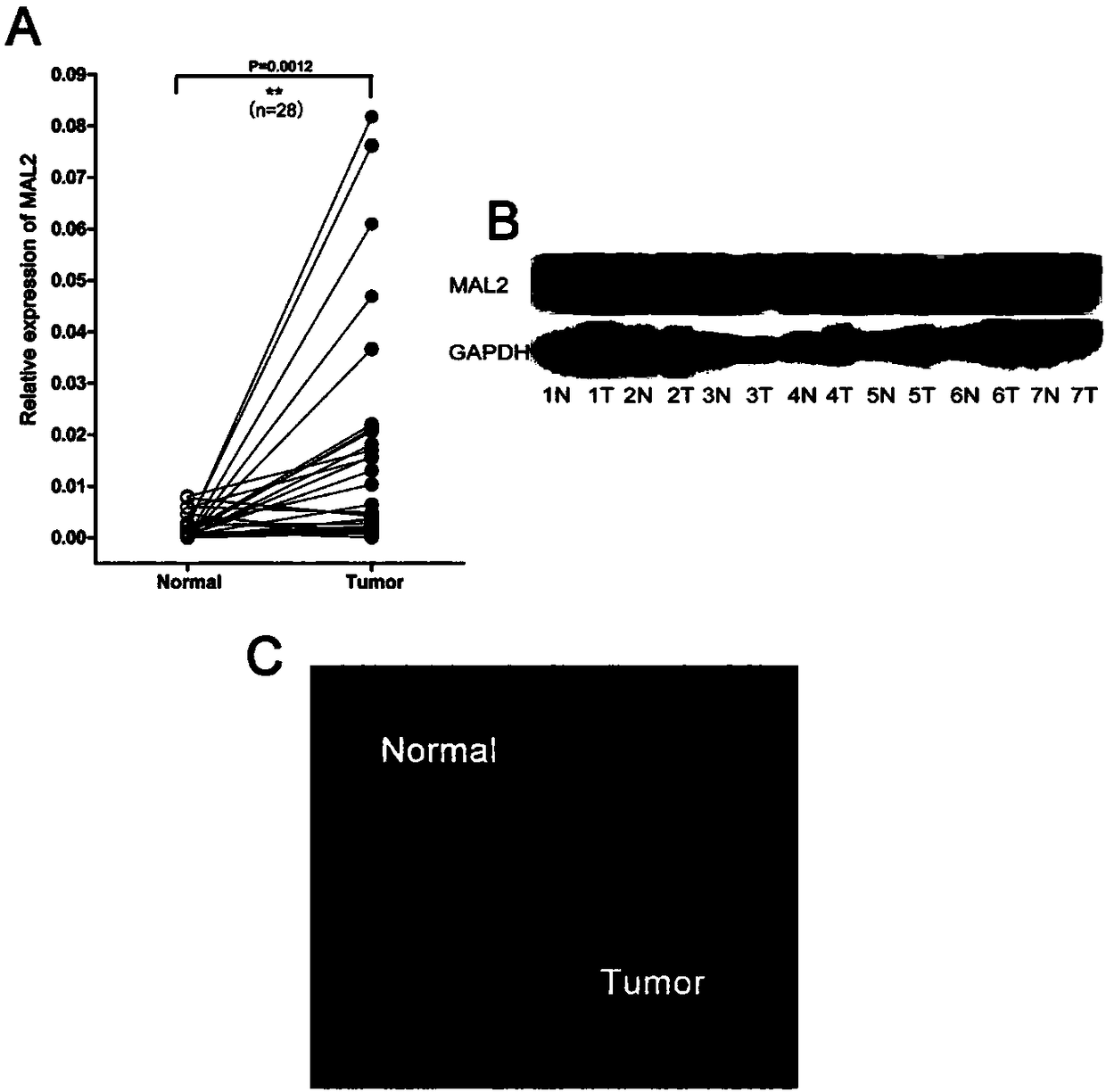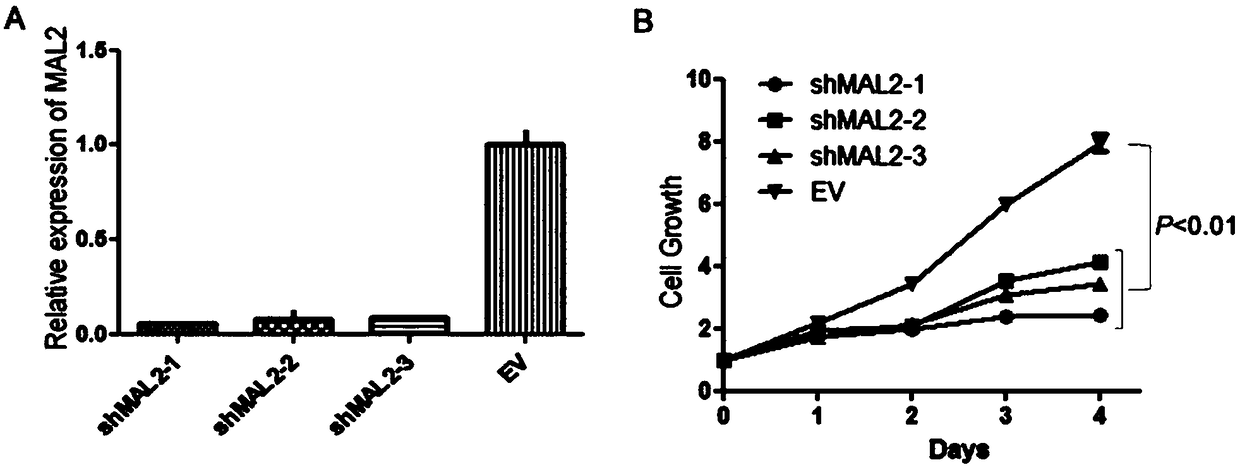Non-small-cell lung carcinoma molecular marker and applications thereof
A non-small cell lung cancer and molecular marker technology, applied in the field of biomedicine, can solve the problems of high missed detection rate in early censuses, difficulty in finding tumors, and ineffective diagnosis of lung cancer
- Summary
- Abstract
- Description
- Claims
- Application Information
AI Technical Summary
Problems solved by technology
Method used
Image
Examples
Embodiment 1
[0035] Example 1 Expression of MAL2 gene and protein in non-small cell lung cancer tissue
[0036] Total RNA was extracted from lung tissue and cDNA was synthesized using Superscript III Kit (Invitrogen), and the prepared cDNA was used as a template for quantitative PCR reaction. Human glyceraldehyde-3-phosphate dehydrogenase (GAPDH) was used as an internal reference, and its upstream and downstream primers were 5'-GCGACACCCACTCCTCCCACCTTT-3';
[0037] 5'-TGCTGTAGCCAAATTCGTTGTCATA-3'. The reaction program is 5 minutes at 95°C; 15 seconds at 95°C, 30 seconds at 58°C, and 30 seconds at 68°C, 40 cycles. The instrument used was ABI 7500 quantitative PCR instrument. The transcription level of MAL2 gene in 28 pairs of non-small cell lung cancer tissues was detected by fluorescent quantitative PCR.
[0038] Depend on figure 1 (A)-(C) It can be seen that the transcription level of MAL2 gene in 28 pairs of non-small cell lung cancer tissues was detected by fluorescent quantitative ...
Embodiment 2
[0039] Example 2 MAL2 promotes lung cancer cell proliferation test
[0040] The plasmid DNA containing the MAL2 gene was transferred into CRL-5872 and A549 lung cancer cells by conventional method liposome transfection method, and the protein expression of the MAL2 gene was verified by Western blot method after transfer into CRL-5872 and A549 cells. Cell proliferation was detected by MTS method.
[0041] figure 2 Western blot in A demonstrates overexpression of exogenously transferred MAL2 in CRL-5872 lung cancer cells; by figure 2 B It can be seen that MAL2 promotes the proliferation of CRL-5872 lung cancer cells after overexpression by detecting cell growth for 6 consecutive days; figure 2 In C, western blotting was used to demonstrate the overexpression of exogenously transferred MAL2 in A549 lung cancer cells; figure 2 In D, by continuously detecting the growth of cells for 6 days, it can be seen that MAL2 promotes the proliferation of A549 lung cancer cells after o...
Embodiment 3
[0042] Example 3 MAL2 transcription inhibition test
[0043] Cultivate A549 cells, according to the full-length sequence of human MAL2 mRNA (NM_052886) published by GenBank, follow the conventional design principles of interfering RNA, design three interfering RNAs namely shMAL2-1, shMAL2-2, shMAL2-3 and design empty vector (EV) according to conventional methods Transfection was carried out, and the interference efficiency of shMAL2-1, shMAL2-2, and shMAL2-3 was detected by fluorescent quantitative PCR technology, and the cell proliferation was detected by MTS method.
[0044] image 3 A Quantitative PCR verified the effective inhibitory effect of three shRNAs of the MAL2 gene on the transcription of MAL2, wherein shMAL2-1, shMAL2-2, and shMAL2-3 represent three different interfering RNAs, and EV represents an empty vector. image 3 A It can be seen that shMAL2-1, shMAL2-2, shMAL2-3 can effectively inhibit the transcription of MAL2; image 3 B shows that through continuous d...
PUM
 Login to View More
Login to View More Abstract
Description
Claims
Application Information
 Login to View More
Login to View More - R&D
- Intellectual Property
- Life Sciences
- Materials
- Tech Scout
- Unparalleled Data Quality
- Higher Quality Content
- 60% Fewer Hallucinations
Browse by: Latest US Patents, China's latest patents, Technical Efficacy Thesaurus, Application Domain, Technology Topic, Popular Technical Reports.
© 2025 PatSnap. All rights reserved.Legal|Privacy policy|Modern Slavery Act Transparency Statement|Sitemap|About US| Contact US: help@patsnap.com



